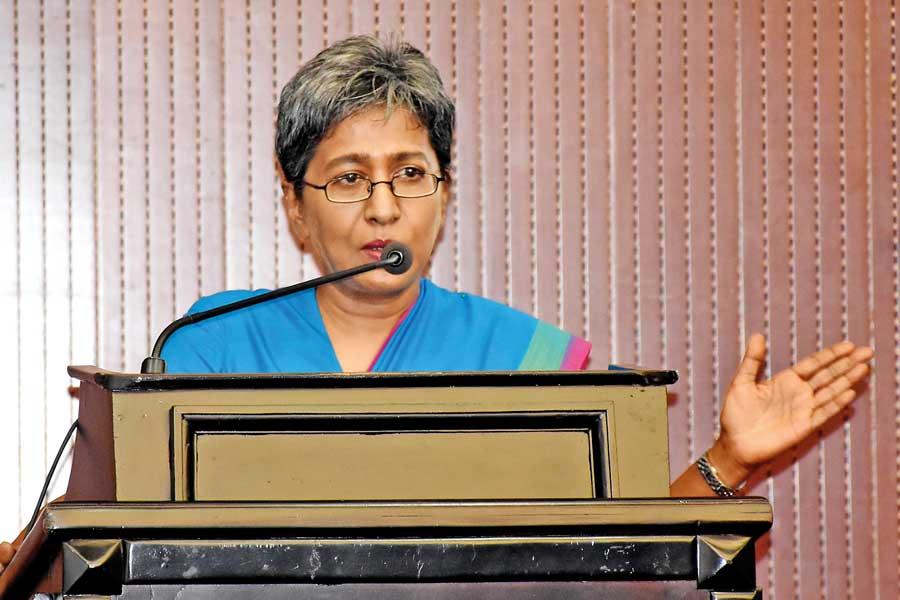03 Feb 2020 - {{hitsCtrl.values.hits}}

Dr. Dushni Weerakoon
By Shabiya Ali Ahlam
Sri Lanka’s policy dilemma has entangled the national economy in a low growth trajectory amid an expanding public debt burden, and reversing this requires a prudent mix of macro stimulus and pro-growth reforms, a top economist in the country asserted.
Policymakers should avoid setting over ambitious growth targets, that would lead to undermining of macro stability, hinder debt sustainability efforts, and ultimately prove to be short-lived economic booms, the Institute of Policy Studies (IPS) Executive Director Dr. Dushni Weerakoon opined.
“Once an economic recovery gets underway, attention can then be focused on key micro reforms to ensure growth momentum accelerates in a sustainable fashion.
“Given the country’s heavy medium to long-term foreign debt settlement obligations, generating hard foreign currency is the only means of lowering Sri Lanka’s current high risk exposure to external shocks,” said Dr. Weerakoon.
The economist presented her views delivering the fifth Gamini Corea Memorial Lecture that focused on the challenges for an upper-middle income economy, in
Colombo last week.
According to Dr. Weerakoon, micro-reforms that require focus are related to three areas—policies aimed to improve efficiency of resources used by the public sector, policies aimed to improve economic incentives such as trade reforms, price systems in agriculture, and State utilities, and policies aimed to improve institutional efficiencies such as customs and tax administration. “Such reforms are essential to broaden Sri Lanka’s growth base and lay the foundation for sustained export-led growth process,”
she stressed.
On fiscal targets and debt sustainability, Dr. Weerakoon warned that Sri Lanka is highly vulnerable to any sign of macro-economic distress.
Any fiscal policy measure that signals widening of budgetary imbalances without credible policy measures on how these will be bridged can trigger fresh macroeconomic risks on the nation’s sovereign ratings, she pointed out.
With rating agencies such as Fitch and S&P having downgraded Sri Lanka’s credit outlook to Negative from Stable this January, Dr. Weerakoon stressed that the country “simply cannot afford” continual risk of rating downgrades in view of the need to roll-over significant volumes of maturing foreign debt.
“The debt build-up means that over the period 2019 – 2022, Sri Lanka must repay around US$ 4,000 million on average per annum.
“The challenge of high dent exposure does not end there, another bunching up of settlements form 2025 is clearly evident,” she elaborated.
Sri Lanka’s public debt stands at approximately 85 percent of GDP.
Pointing out that growth is the best solution for debt, Weerakoon said, for the new government, reviving growth would clearly be the preoccupation in 2020.
16 Nov 2024 1 hours ago
16 Nov 2024 1 hours ago
16 Nov 2024 2 hours ago
16 Nov 2024 3 hours ago
16 Nov 2024 3 hours ago